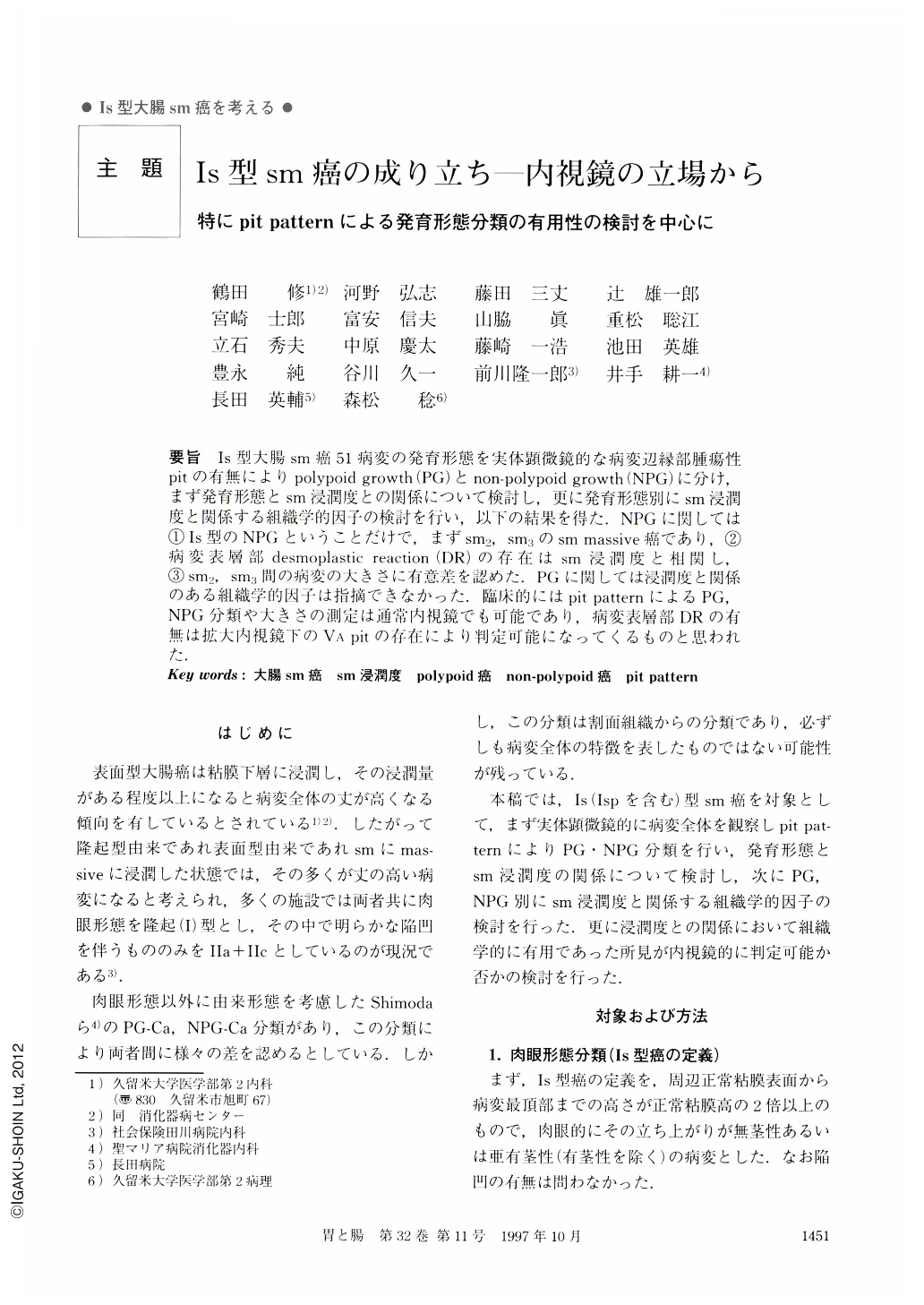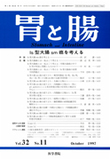Japanese
English
- 有料閲覧
- Abstract 文献概要
- 1ページ目 Look Inside
- サイト内被引用 Cited by
要旨 Is型大腸sm癌51病変の発育形態を実体顕微鏡的な病変辺縁部腫瘍性pitの有無によりpolypoid growth(PG)とnon-polypoid growth(NPG)に分け,まず発育形態とsm浸潤度との関係について検討し,更に発育形態別にsm浸潤度と関係する組織学的因子の検討を行い,以下の結果を得た.NPGに関しては①Is型のNPGということだけで,まずsm2,sm3のsm massive癌であり,②病変表層部desmoplastic reaction(DR)の存在はsm浸潤度と相関し,③sm2,sm3間の病変の大きさに有意差を認めた.PGに関しては浸潤度と関係のある組織学的因子は指摘できなかった.臨床的にはpit patternによるPG,NPG分類や大きさの測定は通常内視鏡でも可能であり,病変表層部DRの有無は拡大内視鏡下のVA pitの存在により判定可能になってくるものと思われた.
Fifty-one colon cancers of Is type with submucosal (sm) invasion were divided into two types of polypoid growth (PG) and non-polypoid growth (NPG) by stereomicroscopic pit patterns and were studied on histopathological factors in relation to degree of sm invasion. Results were summarized as follows: (1) Lesions showing Is type with NPG have massive sm invasion (sm2, sm3), (2) The desmoplastic reaction (DR) located in the surface layer of NPG lesion was correlated to the degree of sm invasion, (3) The average size of NPG lesion of sm2, and that of sm3 were significantly different, (4) There were no histopathological factors in relation to degree of invasion among PG lesions. Clinically, ordinary endoscopic examination could distinguish PG from NPG by pit patterns and measure the size of lesions. The DR in the surface layer could be recognized by the presence of VA pit pattern under magnifying endoscopic observation.

Copyright © 1997, Igaku-Shoin Ltd. All rights reserved.


